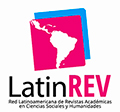Automatic interpretation or automatic translation of speech: concepts, definitions and software architecture
DOI:
https://doi.org/10.11606/issn.2317-9511.v29i0p104-145Keywords:
Machine Interpreting, Speech-to-Speech Machine Translation, Speech Translation TechnologyAbstract
Machine Interpreting (MI) or Speech-to-Speech Translation (S2S) is a new technology that converts spoken utterances from one language into another through three functionalities grouped in only one software: Automatic Speech Recognition (ASR), Machine Translation (MT) and Speech Synthesis (or TTS - Text-To-Speech). Firstly presented in 1983, during ITU Telecom Convention, in Geneva, MI consists in a software that enables natural and efficient communication between people from different languages (Lee, 2015). Nevertheless, MI and its components are scarcely studied, especially in Interpreting Studies, generally investigated by the areas of Computer Sciences (Pöchhacker 2004). Following this trend, this paper aims to present the result of a bibliographical research whose proposal was to investigate how MI is conceived by scholars.Downloads
Download data is not yet available.
Downloads
Published
2017-07-13
Issue
Section
Articles
License
Copyright (c) 2022 Flávio Freitas, Marileide Esqueda

This work is licensed under a Creative Commons Attribution-NonCommercial-ShareAlike 4.0 International License.
Autores que publicam nesta revista concordam com os seguintes termos:
- Autores mantém os direitos autorais e concedem à revista o direito de primeira publicação, com o trabalho simultaneamente licenciado sob a Licença Creative Commons Attribution BY-NC-SA que permite o compartilhamento do trabalho com reconhecimento da autoria e publicação inicial nesta revista.
- Autores têm autorização para assumir contratos adicionais separadamente, para distribuição não-exclusiva da versão do trabalho publicada nesta revista (ex.: publicar em repositório institucional ou como capítulo de livro), com reconhecimento de autoria e publicação inicial nesta revista.
- Autores têm permissão e são estimulados a publicar e distribuir seu trabalho online (ex.: em repositórios institucionais ou na sua página pessoal) a qualquer ponto antes ou durante o processo editorial, já que isso pode gerar alterações produtivas, bem como aumentar o impacto e a citação do trabalho publicado (Veja O Efeito do Acesso Livre).
How to Cite
Freitas, F., & Esqueda, M. (2017). Automatic interpretation or automatic translation of speech: concepts, definitions and software architecture. TradTerm, 29, 104-145. https://doi.org/10.11606/issn.2317-9511.v29i0p104-145







